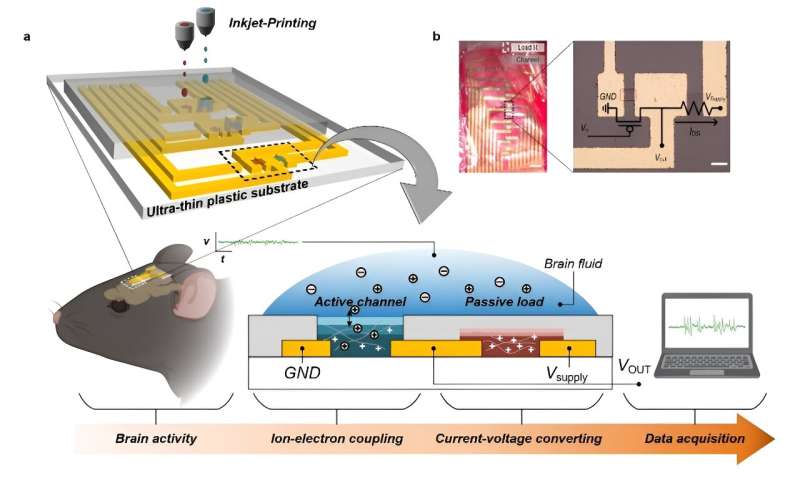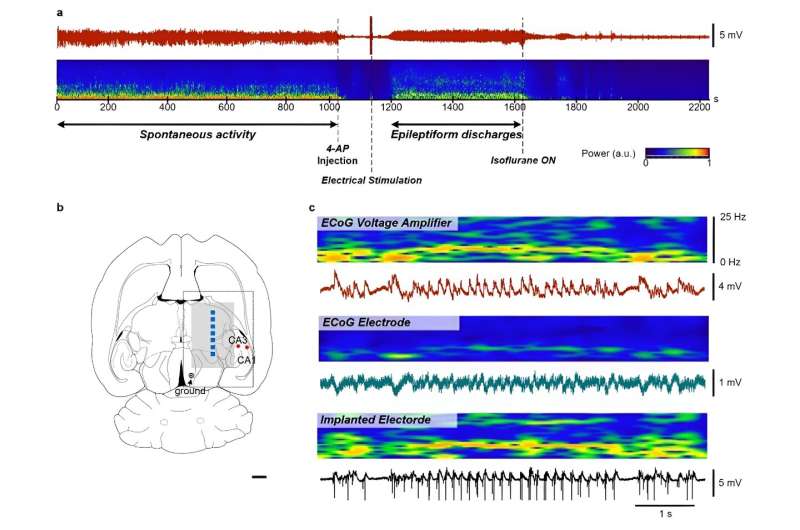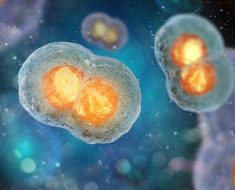
In order to explore brain disorders and discover potential treatments, it is crucial to analyze and interpret the signals transmitted by the brain. Although neural probes attached to the brain can effectively detect subtle bio-signals, they lack the ability to amplify and process these signals, necessitating the use of a separate amplifier. The research team identified a solution in common household “inkjet printers” that have been widely available for a long time.
A collaborative research team led by Professor Sungjune Jung (Department of Materials Science and Engineering, Department of Convergence IT Engineering) with Ph.D. candidate Yongwoo Lee (Department of Convergence IT Engineering) at Pohang University of Science and Technology (POSTECH), Professor Eun-Hee Kim from Chungnam National University Sejong Hospital, and Professor George Malliaras from University of Cambridge has developed an integrated sensor capable of both capturing bio-signals and enhancing their amplification and processing.
The findings from the study will be published as the inside cover of Advanced Materials.
Inkjet printing is a technology that generates patterns by ejecting minuscule ink droplets, each on the scale of picoliter (10-12), onto either paper or a substrate.
The initial step taken by the research team involved crafting an ultra-thin substrate, which is only one-hundredth the thickness of a human hair. This was achieved by employing an exceptionally flexible material that easily adheres to the brain’s surface.
Subsequently, the team harnessed inkjet technology to imprint a sensor onto this substrate, one that possesses the unique capability of detecting, amplifying and processing bio-signals. In essence, they developed a sensor for brain signal amplification.

Following the sensor’s development, the research team conducted experiments involving mice. The results showcased the sensor’s swift recording of high-resolution brain-originating signals upon attachment to the rats’ cerebral cortex.
Professor Sungjune Jung who led the research explained, “This technology empowers the seamless creation of patterns in desired areas, paving the way for future manufacturing of customized bio-signal measurement devices.”
More information:
Yongwoo Lee et al, Tunable Organic Active Neural Probe Enabling Near‐Sensor Signal Processing, Advanced Materials (2023). DOI: 10.1002/adma.202301782
Journal information:
Advanced Materials
Source: Read Full Article





